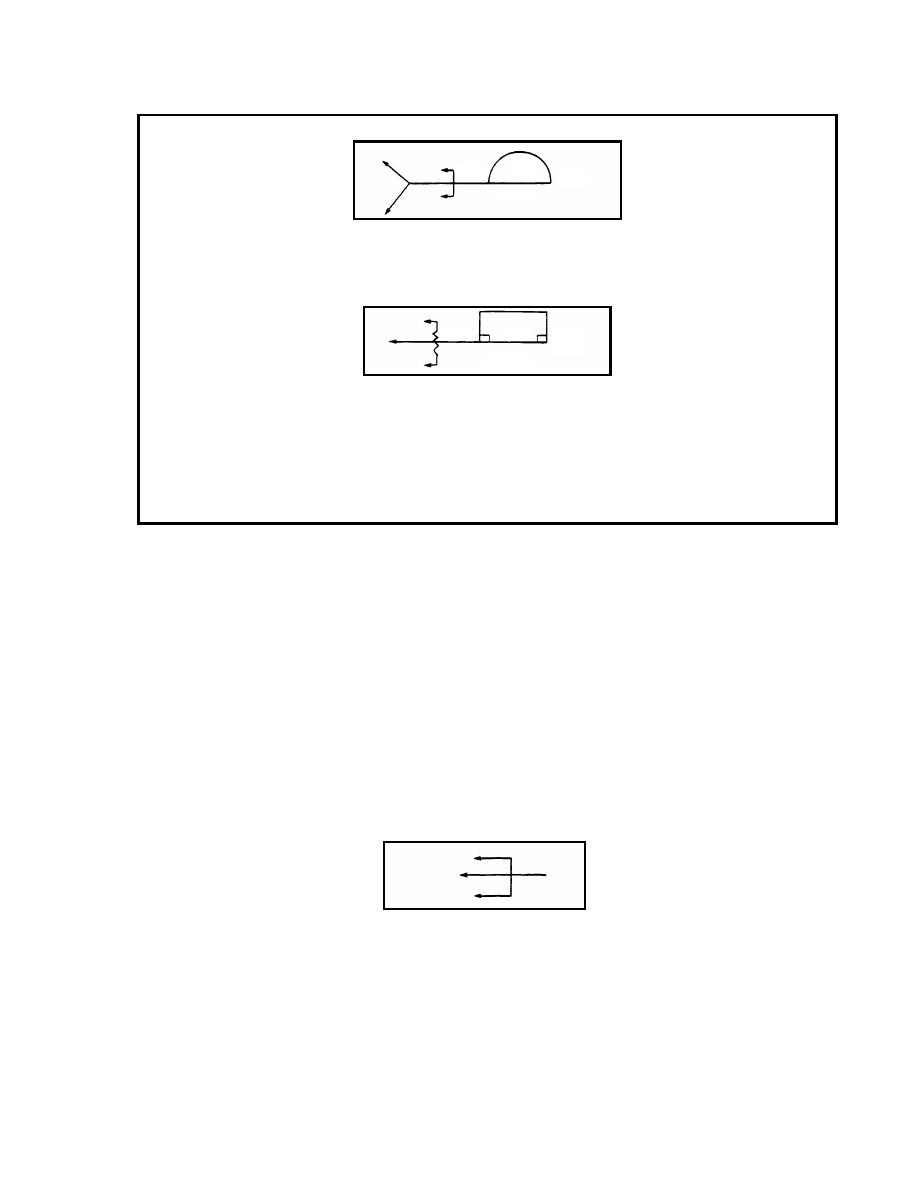
T-1
5/7
800
10.5
Tunnel Number 1
(5 m minimum overhead clearance, 7 m maximum overhead clearance,
10.5 m traveled-way width, 800 m long, and easy bypass available)
5/5
T-2
100
7/9
Tunnel Number 2
(5 m minimum and maximum overhead clearance, 7 m traveled-way width,
9 m total width including sidewalks, 100 m long, and difficult bypass available)
Notes:
1. Underline the traveled-way width if the road entering the underpass is wider than the underpass traveled way.
2. For bypass condition symbols, see paragraph 1-12.
Figure 1-10. Tunnel Symbols
1-12. Bypass Condition Symbol. Bypasses are local alternate routes that can be used to
bypass an obstruction. Bypasses that are limited to specific vehicle types (such as vehicles
capable of swimming or deep-water fording) are so noted on the reconnaissance report.
Bypasses are classified as easy, difficult, or impossible. Bypass conditions must be shown
for each tunnel symbol. The bypass condition symbol is placed on a leader arrow. The
symbol is used in conjunction with a bridge or a tunnel reconnaissance symbol.
Bypass Easy (Figure 1-11). This symbol shows that the obstacle can be
a.
crossed within the immediate vicinity by a United States (US) 2 1/2-ton truck or a North
Atlantic Treaty Organization (NATO) equivalent. When using this bypass, no work will be
required. The symbol is placed on the leader pointing to the geographical location of the
object (bridge or tunnel).
Figure 1-11. Bypass-Easy Symbol
1-7
EN 5621



 Previous Page
Previous Page
